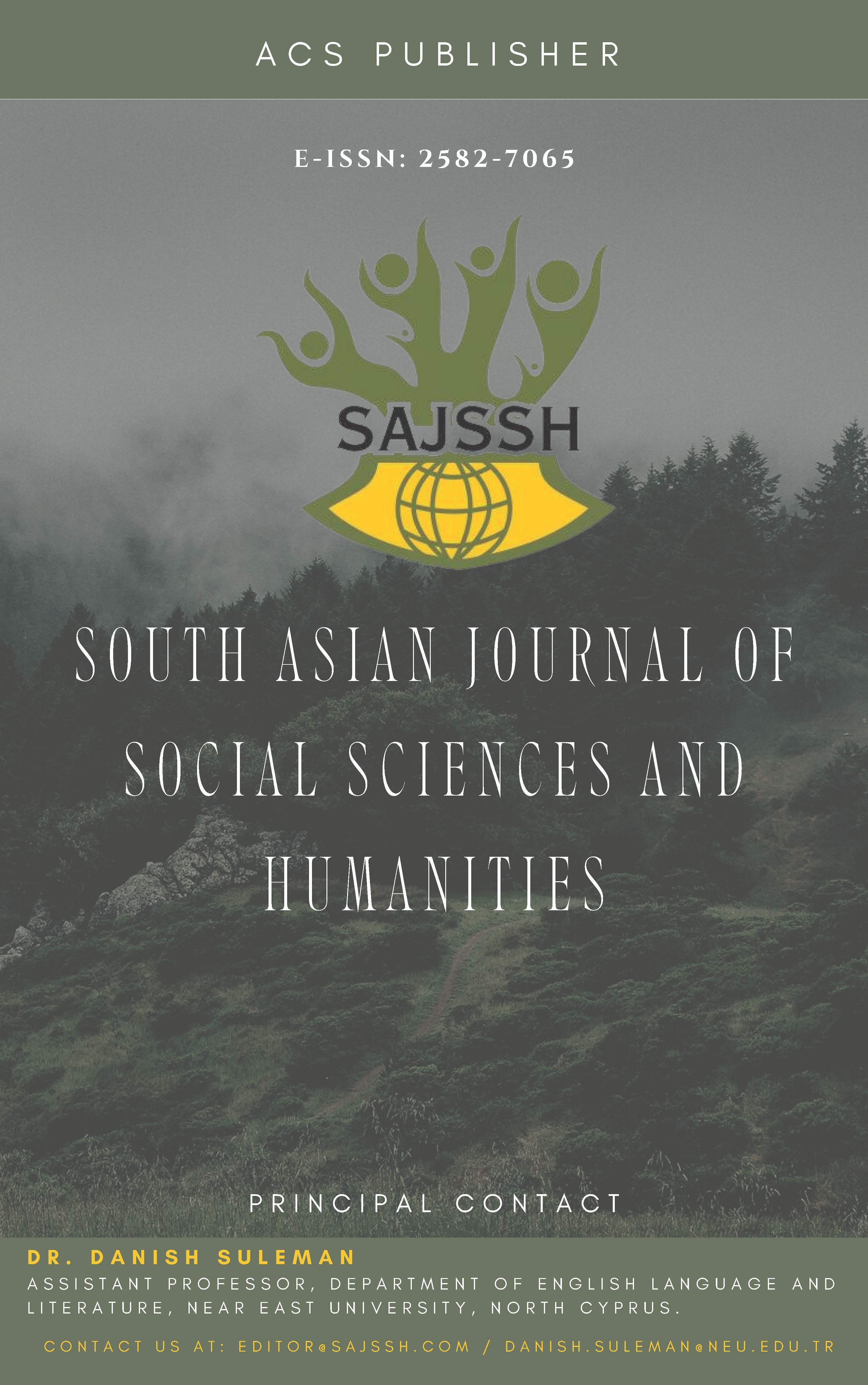Exchange Rate Volatility in Bangladesh: An Exploration of the Leverage Effect of Positive and Negative Economic News
DOI:
https://doi.org/10.48165/sajssh.2024.6307Keywords:
Exchange rate, Volatility, GARCH, TGARCH, EGARCH, Leverage effect, BangladeshAbstract
Purpose of the Study: This research investigates the impact of leverage on exchange rate fluctuations in Bangladesh, with a specific focus on assessing whether negative news about the exchange rate generates a greater effect on volatility compared to positive news. Methodology: The study employs the Exponential Generalized Autoregressive Conditional Heteroskedasticity (EGARCH) (1,1) model to analyze monthly BDT/USD exchange rate data from January 1982 to May 2022. This approach captures the autoregressive conditional heteroskedasticity in the data, allowing for the assessment of volatility patterns in response to positive and negative shocks. Main Findings: The results reveal that positive shocks generate higher volatility in the BDT/USD exchange rate compared to negative shocks, contrary to conventional financial market expectations. Additionally, the study identifies a reversed leverage effect, where positive return changes lead to greater volatility than declining prices, challenging the typical pattern observed in financial markets. Applications of This Study: The findings have significant implications for policymakers, investors, and financial analysts. Understanding the asymmetric effects of exchange rate shocks can aid in designing more effective risk management strategies, monetary policies, and investment frameworks, particularly in emerging markets with volatile currencies. Novelty: This study contributes to existing literature by uncovering a reversed leverage effect in the BDT/USD exchange rate, which contrasts with standard financial market behavior. The application of the EGARCH (1,1) model to a long-term dataset provides new insights into the dynamics of exchange rate volatility and its response to macroeconomic shocks.
References
Abdullah, S. M., Siddiqua, S., Siddiquee, M. S. H., & Hossain, N. (2017). Modeling and forecasting exchange rate volatility in Bangladesh using GARCH models: a comparison based on normal and Student’s t-error distribution. Financial Innovation, 3(1), 1-19.
Alexander, S. S. (1961). Price movements in speculative markets: Trends or random walks. Industrial Management Review (pre-1986), 2(2), 7.
Bala, D. A., & Asemota, J. O. (2013). Exchange-rates volatility in Nigeria: Application of GARCH models with exogenous break. CBN journal of applied statistics, 4(1), 89- 116.
Bollerslev, T. (1986). Generalized autoregressive conditional heteroskedasticity. Journal of econometrics, 31(3), 307-327.
Brooks, C., & Burke, S. P. (1998). Forecasting exchange rate volatility using conditional variance models selected by information criteria. Economics Letters, 61(3), 273-278.
Chong, C. W., Chun, L. S., & Ahmad, M. I. (2002). Modeling the volatility of currency exchange rate using GARCH model. Petranka Journal of Social Science & Humanities, 10 (2), 85-95.
Clement, A., & Samuel, A. (2011). Empirical modeling of Nigerian exchange rate volatility. Math Theory Model, 1(3), 8-15.
Dhamija, A. K., & Bhalla, V. K. (2010). Financial time series forecasting: comparison of various arch models. Global Journal of Finance and Management, 2(1), 159-172.
Engle, R. F. (1982). Autoregressive conditional heteroscedasticity with estimates of the variance of United Kingdom inflation. Econometrica: Journal of the econometric society, 987-1007.
Erkekoglu, H., Garang, A. P. M., & Deng, A. S. (2020). Modeling and forecasting USD/UGX volatility through GARCH family models: Evidence from Gaussian, T and GED distributions. International Journal of Economics and Financial Issues, 10(2), 268.
Hansen, P. R., & Lunde, A. (2005). A forecast comparison of volatility models: does anything beat a GARCH (1, 1)?. Journal of applied econometrics, 20(7), 873-889.
Havi, E. D. K. Analysis of Exchange Rate Volatility in Ghana: Lessons from Redenomination of the Cedi.
Herwartz, H., & Reimers, H. E. (2002). Empirical modelling of the DEM/USD and DEM/JPY foreign exchange rate: Structural shifts in GARCH‐models and their implications. Applied Stochastic Models in Business and Industry, 18(1), 3-22.
Lu, C., Teng, Z., Gao, Y., Wu, R., Hossain, M., & Fang, Y. (2022). Analysis of early warning of RMB exchange rate fluctuation and value at risk measurement based on deep learning. Computational Economics, 59(4), 1501-1524.
Madura, J. (2020). International financial management. Cengage Learning.
Downloads
Published
Issue
Section
License
Copyright (c) 2025 South Asian Journal of Social Sciences and Humanities

This work is licensed under a Creative Commons Attribution 4.0 International License.





